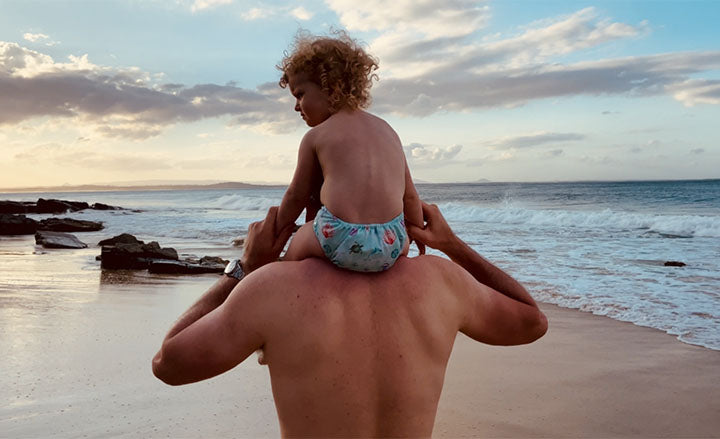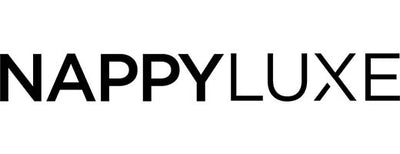I Used Cloth Nappies Every Day for Two Years - Here's What I Learnt [A Dad's View]

It’s no secret, having children is amazing, but they’re expensive. Several studies in 2013 and 2018 estimated that the cost ranges from $159,120 up to $548,500 over 18 years, per child. Ouch!
As a new father to be, when I was presented with the suggestion of changing to modern cloth nappies, my first thought instantly switched to, here we go again.
More stuff we don’t need to go with all those ‘essential’ and ‘non-negotiable’ baby related purchases already cluttering the house before the baby had even arrived yet.
I’m either tight, grumpy, responsible with money, or typical of most dads when they are presented with yet another sizeable purchase. I’ll let you decide and I’m fine with being branded any of the above.
Looking back, I think this is a natural reaction for all primary earners in the family, whether it’s the mum or the dad, as we try to balance the books after going down to one full time income.
Fast forward to years of fulltime cloth nappy use, I now glide past the nappy isle in the supermarket while smugly looking at the high (and rising) disposable prices, safe in the knowledge that they haven’t had feature in our weekly shop for years.
Full kudos to my wife for suggesting we switch to cloth, wanting to do the right thing by the environment and setting us up for cloth nappy success. I take no credit.
Cloth nappies may be the only baby product which will save you money
I’m happy to be corrected on this, but I can’t think of another baby product which actually saves parents money and helps the environment. Can you?
I’d struggle to name anything else. Breast feeding instead of formula maybe, but that’s not always an option for all parents.
Buying disposable nappies for one child adds up to around $3,000 by the time they’re toilet trained.
Buying enough reusable cloth nappies to last the same length of time (and beyond) costs around $700. Full disposable vs cloth nappy cost comparison here.
As we now plan for the imminent arrival of our second child, knowing that further savings are on the horizon reminds me how good a decision it was to switch.
So after years of use, in my view, what are the main pros and cons for each and what do Dads who are thinking about switching to cloth need to know?
Cloth nappies vs disposables
Cloth nappy Pros
- Reusable (lasting years when choosing a premium brand)
- Money saving (in the thousands, per child)
- Environmentally friendlier option
- Beautiful designs (great for warm climates when visible)
- Less prone to nappy rash
- Can reduce time to potty training
- Reduced smell (when stored correctly before washing)
Cloth nappy Cons
- Requires upfront investment
- Increased washing and preparation time
- Leaks are more likely (only if you choose cheap brands!)
Disposable Pros
- Quick and easy to use
- Widely available
- Disposable (stating the obvious)
Disposable Cons
- Expensive
- Ugly
- Terrible for the environment – they take over 500 years to decompose (learn more about the environmental impact of disposable nappies)
- Increased likelihood of nappy rash
- Nappy bins smell awful and require constant emptying.
Why our cloth nappy journey wasn’t all plain sailing
After about three months of using cloth nappies we realised the chosen brand we had picked wasn’t up to scratch. We were getting regular leaks as our daughter grew and her milk intake increased.
The microfibre inserts were not absorbent enough, nor did they hold the water they had absorbed very well either as our daughter began to explore the world.
We tried to increase the absorbency of each nappy, but the inserts simply weren’t good enough. Adding extra absorbency meant that they were then very bulky, it became difficult to fit the nappy on our baby and even more difficult to fit onesies on her.
Microfibre basically acts like a sponge, it absorbs liquid fast but when compressed, the liquid comes back out.
This meant that we’d get compression leaks when our baby was strapped into the car with the buckle pressing against the nappy.
It became clear that our chosen brand of nappies were not fit for purpose.
Furthermore, we had tried to follow the recommended washing instructions the brand provided but we were left with stains
Don’t get me wrong, they looked great, had cute little patterns and were priced reasonably. The biggest problem was the microfibre insert material which was causing the leaks and the fact the material didn’t hold the fluid very well under pressure.
Luckily my wife wasn’t a quitter, rather than give up completely, she ordered a mixture of other brands to trial and we soon found things had improved using more premium brands that are made from better quality materials.
Why I would never recommend a pocket nappy
Preparing pocket nappies requires you to place an insert into a small material pocket of the nappy cover using your hands. I’m 6 foot 6 with large hands, and for me this was just about possible, but incredibly time consuming and carried the risk of ripping the nappy stitching.
From our initial research, pocket nappies seemed like a good starting point for cloth nappy newbies, but had we known how fiddly the pocket stuffing process actually was, we never would have gone down this avenue.
We soon found our ideal nappy setup, Snap & Go style nappies, also know as all-in-two (read our cloth nappy jargon buster to learn more), which are much quicker and easier to snap together compared to pocket nappies.
How to deal with number 2’s
No one wants to be dealing with poopy nappies, but you take the good with the bad.
As a parent, you are dealing with code browns on a daily basis.
They are unavoidable and you get used to it, irrespective of whether you are using cloth or disposables.
We recently had a short stint of using disposable nappies for a camping trip, and I can confirm that number 2’s do not stay inside a disposable very well compared to cloth nappies.
So either way, I can assure you that parenting means you’re dealing with poo, and you may as well save some money in the process.
Plus, it’s actually much easier than it sounds. While the baby is small and breastfed, the nappies can go straight in the wash – when they’re older and eating solids, their poop is knocked into the toilet first.
The bottom line
Not all my dad mates are into using modern cloth nappies, and it’s not something we spend hours discussing, but I certainly feel proud knowing we’ve saved thousands and have reduced our environmental footprint in the process.
I want to make smart financial decisions for the family, and cloth nappies have been a great way to save money.
I'm delighted we did it. In fact, it was so good and something we felt so passionate about in the end that we founded NappyLuxe.
Our hope is to get more parents off to a successful start with cloth and to have a great experience using them.
Ready to switch? Shop premium, easy to use cloth nappies now.
Want to learn more first? Start your cloth journey by reading our ultimate FREE cloth nappy users guide.
Blog posts
How To Use Wool Nappy Covers At Night (Benefits & Wash guide)
Best Cloth Nappies Australia [What Features Do Top Brands Have In Common]
The 5 Top Uses For Cloth Wipes Revealed
Get 10% off your first order
Plus get notified about promotions, new releases and journal updates.





















